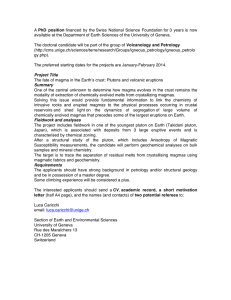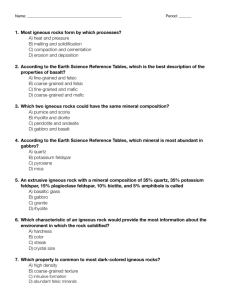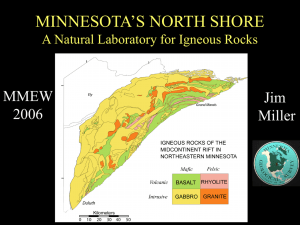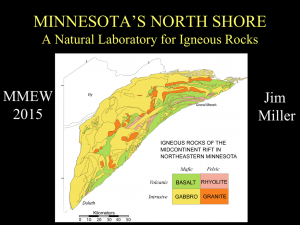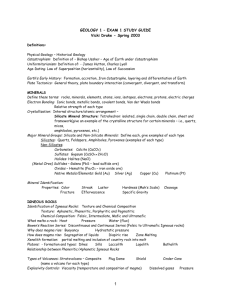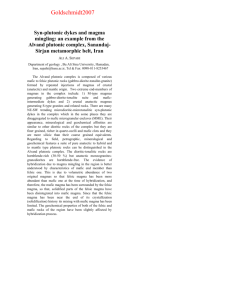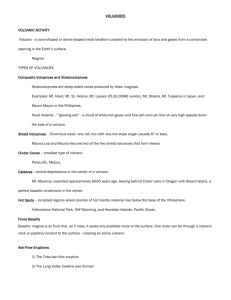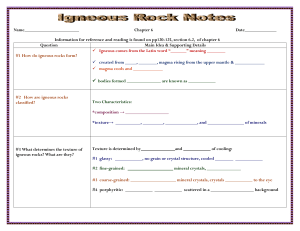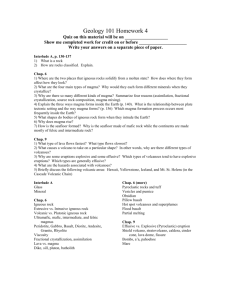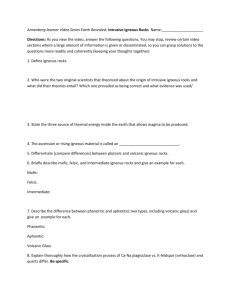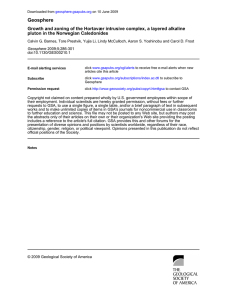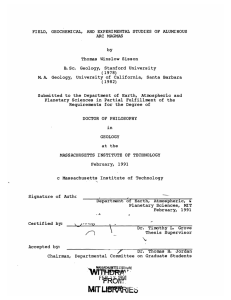PowerPoint
advertisement
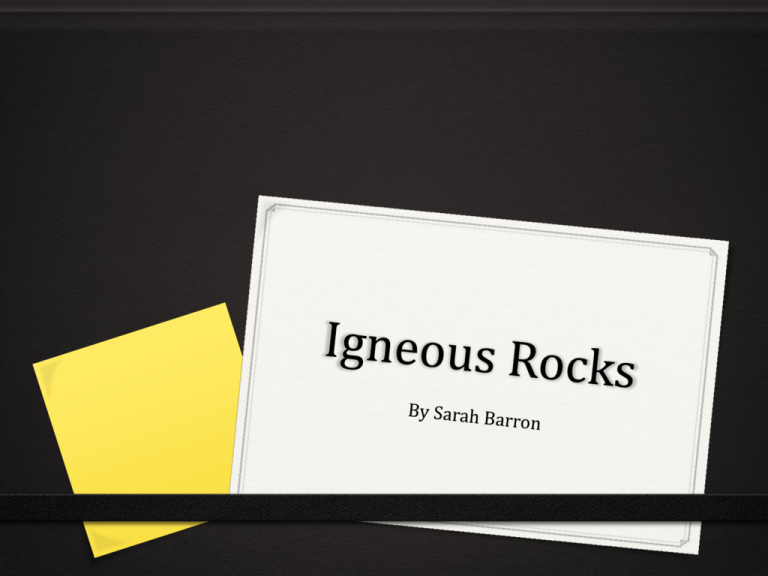
Basic Facts About Igneous Rocks 0 Igneous rocks- crystalline solids which form directly from the cooling of magma. 0 This exothermic process involves a phase change from a liquid state of matter to a solid state of matter. 0 The surface of the earth, where it exposed to the coldness of space, is made of igneous rock. Naming Igneous Rocks 0 Igneous rocks are given names based upon two things: what they are made of (composition) and how big the crystals are (texture). Texture 0 How large are the mineral grains in the final solid rock? 0 The slower the magma cools, the larger the mineral grains will be. 0 Classifications by texture name igneous rocks to be either intrusive or extrusive. Comparisons of Texture Intrusive Extrusive 0 Coarsely-grained 0 Finely-grained 0 Mineral grains are 0 Mineral grains are large enough to see without a magnifying glass 0 Also referred to as phaneritic only visible with aid of a magnifying glass 0 Also referred to as aphanitic Texture Classifications Phaneritic Aphanitic 0 Granite 0 Obsidian 0 Gabbro 0 Basalt Composition 0 The composition of igneous magmas is directly related to where the magma is formed 0 Magmas are generally mafic if they are associated with crustal spreading 0 Magmas are felsic if they are associated with crustal compression and subduction Mafic 0 Basalt is produced if the magma erupts at the surface 0 Gabbro is produced if the magma never makes it out of the magma chamber 0 Basalt and gabbro are compositionally the same however, they are two different rocks based on texture. Intermediate 0 Intermediate magmas are associated with crustal compression and subduction like the felsic magmas. 0 Intermediate magmas go through the same differentiation process as felsic magmas as well. 0 Intermediate magmas produce diorite and andesite. 0 Diorite is intrusive whereas andesite is extrusive. Felsic 0 Mafic seafloor basalt and continental sediments are subducted back into the crust, where they remelt, thus continues the differentiation process. 0 Magma enriched in the lighter elements is the product. 0 The final result of the differentiation process, the felsic magmas, lead to the formation of granite or rhyolite. 0 Granite is intrusive whereas rhyolite is extrusive. Mafic-Basalt IntermediateDiorite Felsic- Granite Classifications of Composition Chart References 0 Google.com/images 0 jersey.uoregon.edu/~mstrick/AskGeoMan/geoQuerry 13.html
